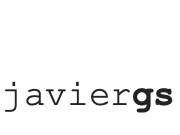A third paper accepted to AIED2013.
16th International Conference on Artificial Intelligence in Education
Memphis, TN, USA.
July 9-13, 2013
Abstract
User modeling in AIED has been extended in the past decades to include affective and motivational aspects of learner’s interaction in intelligent tutoring systems. In order to study those factors, various detectors have been created that classify episodes in log data as gaming, high/low effort on task, robust learning, etc. In this article, we present our method for creating a detector of shallow modeling practices within a meta-tutor instructional system. The detector was defined using HCI (human-computer interaction) task modeling as well as a coding scheme defined by human coders from past users’ screen recordings of software use. The detector produced classifications of student behavior that were highly similar to classifications produced by human coders with a kappa of .925.
Reference
Girard, S., Zhang, L., Hidalgo-Pontet, Y., VanLehn, K., Burleson, W., Chavez-Echeagaray, M.E., and Gonzalez-Sanchez, J. (2013). Using HCI Task Modeling Techniques to Measure How Deeply Students Model. Lecture Notes in Computer Science. Artificial Intelligence in Education. Proceedings of the 16th International Conference on Artificial Intelligence in Education (AIED). Memphis, TN, USA. July 2013. Springer-Verlag Berlin Heidelberg. Volume 7926 LNAI, pp 766-769. ISSN: 0302-9743.
